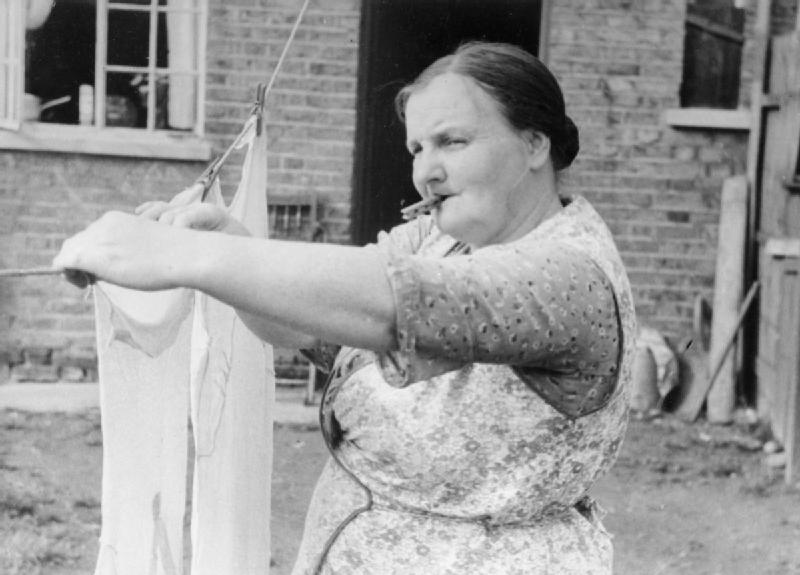
Vanity it is, to wish to live long, and to be careless to live well.
Thomas à Kempis
Continue & Comment
Miss Silver’s Wardrobe Precepts
Have you ever wanted a simple, sane, reliable wardrobe that lets you be you and just works?
So have I – and then I found someone who has one: Miss Maud Silver, from the novels of Patricia Wentworth.
I carefully scrutinized how she did it, and here are the results: ten precepts to guide you toward a wardrobe that works for you. Precept the First: Do not be limited by fashion.
Precept the First: Do not be limited by fashion.
Choose clothes that you like, that suit you and work for your life, and pay no heed to whether they are in fashion or not.
Furthermore, if such clothes are not readily available, feel free to alter what is available to suit yourself.
Miss Silver, for example, prefers a high neck, and has her dresses adapted accordingly.
Precept the Second: To thine own self be true.
Never use clothing as a way to pretend to be someone or something you’re not.
Do not be embarrassed to be seen repeatedly in the same clothes; nor ashamed to be seen in old clothes, if well cared for.
Miss Silver would certainly agree that “no one can make you feel inferior without your consent,” as Eleanor Roosevelt is said to have said.
 Precept the Third: Choose quality.
Precept the Third: Choose quality.
Don’t shop needlessly, but when you must buy, buy the best you can afford. To buy an inferior garment which won’t last is a false economy.
And naturally, having bought good quality, you will want to take good care of it, with appropriate washing, pressing, mending and so forth.
Precept the Fourth: Have a line of succession.
In due course of wear your once-new “best” will be relegated to “second best” and so forth, down the line of wear, and a new “best” will be acquired.
This policy works in many different areas of the wardrobe, although the time involved may be different for different areas.
Miss Silver buys a new summer and winter dress every year, but new hats are acquired much less often.

Precept the Fifth: Buy flexible clothing.
Look for clothes which work for more than one level of formality. Miss Silver wears last year’s summer silk dress for evening-wear, for example.
There’s no point in buying, say, a special-occasions-only dress which becomes entirely useless once it’s worn enough to no longer be suitable for special occasions.
Precept the Sixth: Coordinate accessories.
Miss Silver has her hats, coat, shoes, stockings, gloves and handbag in black. These coordinate with each other and with all her dresses, and she is thus spared the need to buy and maintain multiple sets of everything.
Of course, you needn’t choose black, nor all matching, but make sure everything works together.
 Precept the Seventh: Be selective in ornamentation.
Precept the Seventh: Be selective in ornamentation.
Choose a few favourite ornaments. You need no others.
(This doesn’t include any family heirlooms you do not wear yourself but are waiting to pass down to younger members of the family.)
Miss Silver has a string of gold filigree beads, a locket with her late parents’ initials, and three brooches (one of which carries her pince-nez). Note: she doesn’t wear them all at once.
Precept the Eighth: Make use of trimmings.
A plain hat, for example, can be varied from year to year by altering the trimmings (which can themselves be recycled).
Trimmings can also be removed from worn-out garments and attached to the new, as Miss Silver does with the trim on her dressing-gown.
One can also choose to trim the clothing no one sees. (Miss Silver has three rows of crocheted lace trimming on her knicker legs.)
 Precept the Ninth: Make it yourself.
Precept the Ninth: Make it yourself.
Miss Silver not only crocheted the aforementioned trimming, she designed it herself.
She also knits an endless series of garments (although generally they are for friends and family, rather than herself).
Making things yourself allows for endless customization. Quite literally, suit yourself.
Precept the Tenth: Always have a handkerchief.
Clean, plain, and of a sensible size. You never know when they will come in handy – nor for what.
Ten Ways to a More Ethical Wardrobe
Most of us would like to have a more ethical wardrobe. Most of us don’t. It’s not a case of active ill will, or even apathy – it’s a matter of not knowing where to start. Or what to do.
After all, clothes don’t come with labels saying how many toxic chemicals were used in their manufacture, or how many hours of unsafe, underpaid or even forced labour went into their production.

Which makes it hard to know whether the item you are buying is supporting people who desperately need the work, or taking advantage of their desperation to effectively transform them into your outsourced slaves.
Which is why it was not only informative but invigorating to read Lucy Siegle’s book To Die For: Is Fashion Wearing Out the World? Because she not only points out the problems, but suggests a few solutions. I’ve collated ten of them here for your consideration.
1: choose your fibres carefully. Production, useful life, disposal. Some man-made fibres are actually less unfriendly to the environment in production than, say, cotton; but on the flip side your grandchildren’s grandchildren will be cold in their graves and the stuff still won’t have rotted down. I recommend Siegle’s book for a more in-depth analysis of the pros and cons of various fibres. Organic cotton and wool are two of the better options.
2: mend. Siegle suggests putting aside 10% of your clothing budget for mending; you get more Little Old Lady points if you do the mending yourself. Personally, I take my shoes to a cobbler for resoling and mends (considerably cheaper than a new pair of good shoes), but I try to do other mending myself – buttons, hems, darning…

3: buy second hand. Alas, the nature of fast-fashion means that the quality of second-hand clothing is considerably lower than it once was: if you expect people to move on to something new after two or three wearings, there’s no need to make the item durable. Not to mention that if you’re a sweatshop worker paid by the item, there’s a lot of pressure to construct the garment quickly, not well. Still, good items can be found, they just take a bit more finding than they used to.
4: swap. Either casually, among friends (it helps to have friends of similar taste and/or size) or at an organized swap. As with buying second-hand, it gives the garment a useful second life, rather than consigning it to the dump.
5: make your own. I was delighted to read Siegle’s line, “In many ways knitting is the perfect cornerstone for the burgeoning ethical fashion movement.” I can knit my own socks, hats, gloves and so forth; my next big batch of skills to be acquired is learning how to sew my own clothes. Obviously, this is a long-term, take-it-a-step-at-a-time proposition. Still, the freedom inherent in being able to decide for yourself what cloth, cut and colour you want, instead of being forced to choose from a limited number of options, is very alluring.

6: launder carefully. We tend to forget that some of a garment’s eco-impact is neither in its birth nor in its death, but in its life with us. Wash your clothes in cold water, air-dry where possible, and don’t wash your clothes unless they actually need it. (You don’t need to launder a garment just because it’s touched your body. Unless you have some sort of oozing skin disease…) Avoid dry-cleaning too, if you can – the ‘perc‘ which is most commonly used in dry-cleaning is not only carcinogenic but neurotoxic. And in any case, most things marked ‘dry clean only’ do not explode in a ball of flames if you gently hand-wash them.
7: re-use materials. One garment can be refashioned into another. A sheet can become a dress. A pair of jeans can embark on a second life as a skirt. A hideous knitted monstrosity from the op-shop can be unravelled for the wool and reknitted into something much more appealing. (Unless it’s glittery mohair. Not much can be done about that.)
8: buy from ethical brands. This takes a fair bit of digging, as nothing pleases the corporate pocket-book more than marketing to the fair-minded without actually putting their money where their mouth is, but happily there are those who will do some of the digging for you. Baptist World Aid’s Ethical Fashion Guide is compiled for the Australian market, but globalization being what it is, people from all over will find it useful.

9: move slowly. Don’t allow yourself to be rushed into purchases, either by lack of planning (hole in the last good pair of socks!) or by cunning marketing ploys. Do your due diligence. Plan ahead. Savour the pleasures of anticipation. Don’t buy anything unless you’re sure that you’re making a good decision, one that you’ll be happy with tomorrow (and all the years to come).
10: consume less. As Dame Vivienne Westwood says, “Buy less. Choose well. Make it last. Quality, not quantity. Everybody’s buying far too many clothes.” Wearing the same things over and over again is not a penance when each item is something you love, something which tells the world a bit about who you are, something that is a pleasure to wear.
Lucy Siegle writes at the end of To Die For, “Free of the constraints of endless consumption, you can have a wardrobe that is more sustainable, more valuable, more enduring and more you.”

Doesn’t that sound wonderful? If you’re anything like me, there’s a fair way to go yet, but we can get there – one step at a time.
